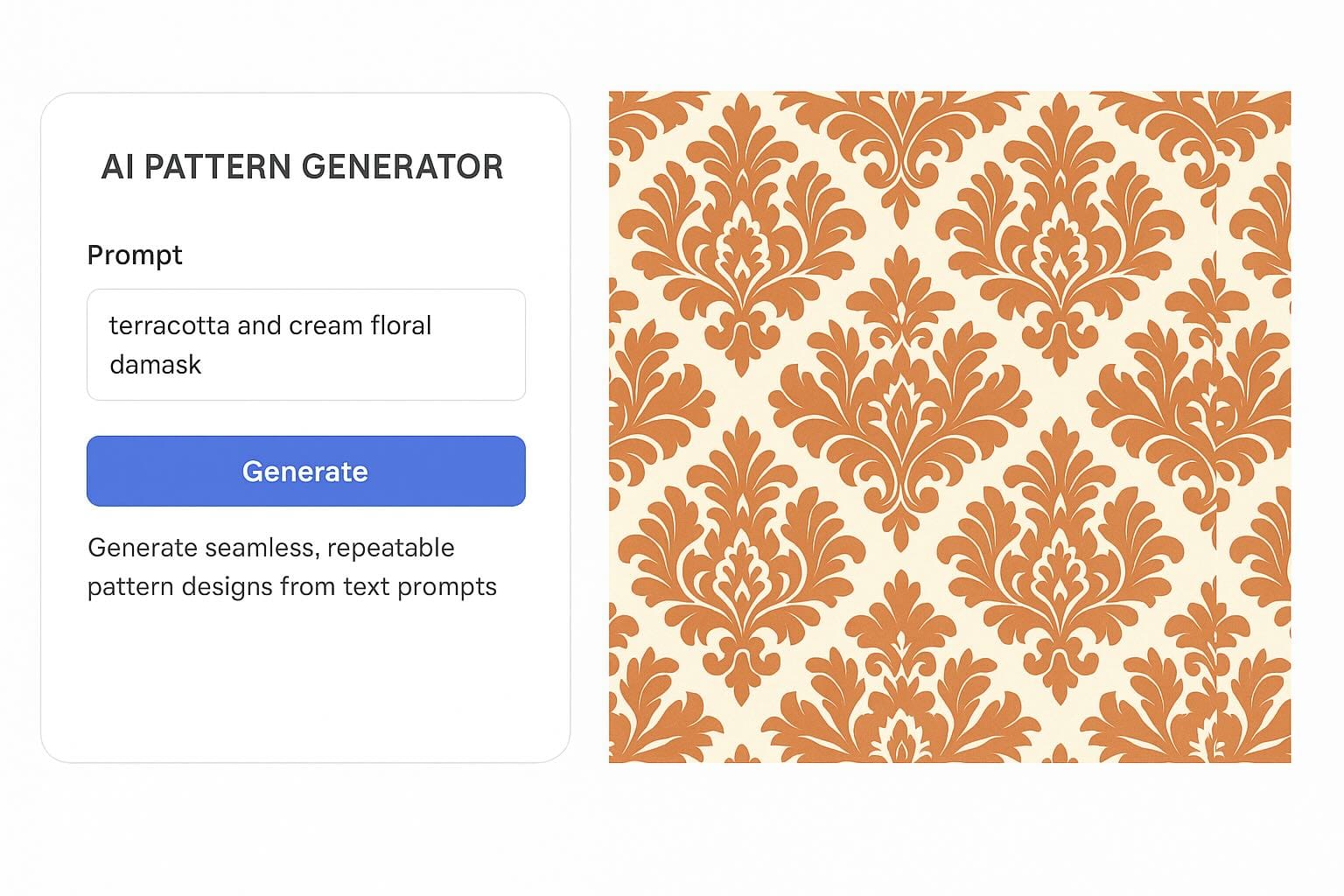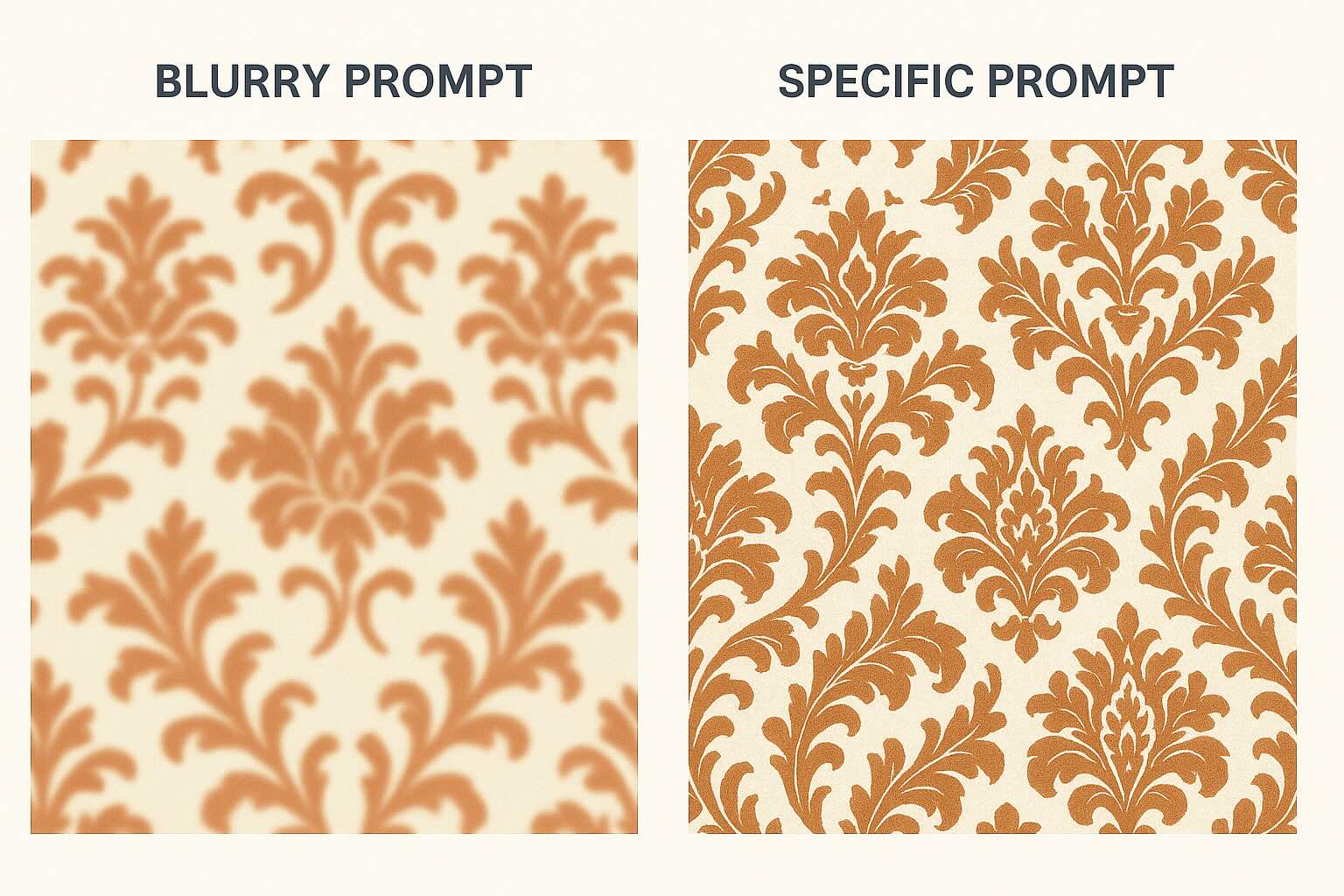Pattern creation is no longer just a manual craft—it's becoming a faster, more innovative, and more flexible process thanks to artificial intelligence. Instead of labouring over hand-drawn sketches or toggling endlessly between layers in design software, creatives today are embracing AI pattern generators to explore ideas, experiment quickly, and bring custom designs to life with just a few clicks.
Are you considering creating your pattern? Tools like Coura make it easy to start.
Whether you're a textile designer working on a seasonal collection, a small brand looking for standout packaging, or a digital illustrator building your next visual series, this guide covers the most effective AI pattern generators of 2025—and how you can make the most of them.
What Are AI Pattern Generators? (And Why They're Trending in Design)
AI pattern generators utilise machine learning, particularly image-language models, to generate repeatable and seamless patterns based on written prompts. Users describe the colours, style, subject, and intended application, and the AI transforms these descriptions into a usable design.
You can specify elements like:
- Colour themes (e.g., "cream and terracotta")
- Pattern types (e.g., "baroque damask", "organic leaf lines")
- Aesthetic directions (e.g., "boho vintage", "minimalist")
- End-use (e.g., "gift wrap", "activewear fabric")

Result? A ready-to-download pattern that can be applied across fashion, packaging, home decor, and more.
Statista projects that the AI software market will exceed $126 billion by 2025—visual design tools like these are a rapidly growing niche.
"I used to spend entire evenings trying to align tile patterns manually. Now, with Coura, I can go from concept to mockup-ready in under 15 minutes."
— Selina Wang, Independent Fashion Designer
Top AI Pattern Generator Tools to Know in 2025
1. Coura.ai – Tailored for Fashion & Textiles
Coura stands out for its deep focus on fashion-ready prints. It's built to understand how fabric flows and how print scale affects garments. You get:
- Custom controls over repeat size and colour
- Fabric-specific previews
- Print-quality downloads (SVG/PNG formats)
- A growing creator gallery with real examples
Best for: fashion designers, fabric manufacturers, textile students
2. Patterned AI – Easy, Seamless Designs for Beginners
Patterned AI offers a fast, no-frills experience ideal for casual creators or social media designers. While it lacks fashion-level control, it's excellent for:
- Seamless wallpaper backgrounds
- Packaging and digital decor
- Royalty-free pattern downloads
Simple UI, excellent starting point
3. Canva – For Quick, Digital-First Designs
Canva's pattern tool is easy to use and integrated into its existing design editor. While it doesn't offer textile-grade exports, it's fun for projects like:
- Invitations
- Social posts
- Stationery
No SVG or scale adjustments; not ideal for physical products
4. Other Notable Tools
- Fotor: Strong colour rendering and vector pattern generation
- Photo AI: Great for wallpaper and packaging design
- Creative Fabrica: Converts text directly into seamless designs—great for digital use
Pro Tip: Use a feature comparison chart to evaluate export formats, scale controls, and commercial licenses before choosing a tool.
How to Write Better AI Pattern Prompts (with Real Examples)
The prompt you write is everything. AI needs clear, descriptive guidance to produce high-quality, usable outputs. Here's a formula:
[Color] + [Motif] + [Style] + [Context]
Example:
"Terracotta and cream floral vines in vintage botanical style, for bohemian wallpaper"
Versus:
"Floral pattern"
The result? The former produces richer, more defined, usable artwork. See for yourself:

Use this quick checklist before hitting "generate":
- Specific colour names
- Identifiable objects or symbols
- Mood or style direction
- Intended usage context
Tip: Coura's interface includes prompt refinement tools to help get better results faster.
From Concept to Production: Using AI Patterns in Fashion
These tools aren't just for brainstorming—they're built for real-world use, too. With platforms like Coura, you can:
- Export in print-safe resolutions (300 DPI)
- Adjust the scale for meters or inches
- Simulate on real clothing mockups: dresses, tote bags, tees, scarves
Designers can transition from a rough concept to digital-ready production files in a single, seamless workflow.
Start turning your ideas into tangible prototypes—right in Coura's editor.
Creators Spotlight – Real-World Pattern Projects
We've seen inspiring use cases from the Coura community. One standout:
Kira Lim, a grad student in textile design, built her 12-print collection "Soft City" using Coura. Her patterns—structured grids inspired by Seoul subway tiles—blended subtle colour cues and AI-suggested textures.
Want to be featured? Share your creations using #MadeWithCoura on Instagram.
What AI Pattern Generators Don't Replace
Let's clear up a myth: AI doesn't replace designers—it amplifies them.
You still need a sense of design, trend intuition, and material expertise. But with AI, your process becomes:
- Faster
- More iterative
- Less technical-blocked
Frequently Asked Questions (FAQ)
Q1: Can I export print-ready files?
Yes, many tools, like Coura, provide high-res SVG or PNG at 300 DPI.
Q2: How do I control the size or repeat of my pattern?
Look for features like tile-size controls or vector exports.
Q3: Are AI-generated patterns copyright-safe?
Depends on the platform. Coura offers full commercial rights. Always check the terms.
Q4: Can I turn my hand sketches into patterns?
Yes! Some tools, including Coura, support sketch-to-pattern pipelines.
Q5: What fields use these tools?
Fashion, branding, packaging, home interiors, e-commerce, digital content… the list continues to grow.
Final Thoughts: Is It Time to Upgrade Your Pattern Workflow?
AI tools are reshaping pattern design—not by replacing the artist, but by opening new doors. For anyone in the creative space, from indie fashion labels to packaging startups, this is your opportunity to rethink how you work with prints.
Comments on “The Future of Pattern Design: How AI Tools Are Empowering Creators in 2025”